Configuring SAML SSO for Peakon
These steps will guide you through setting up the single sign-on functionality between ADSelfService Plus and peakon.
Prerequisite
- Login to ADSelfService Plus as an administrator.
- Navigate to Configuration > Self-Service > Password Sync/Single Sign On > Add Application, and select Peakon from the applications displayed.
Note: You can also find Peakon application that you need from the search bar located in the left pane or the alphabet wise navigation option in the right pane.
- In the Peakon configuration page, click IdP details in the top-right corner of the screen.
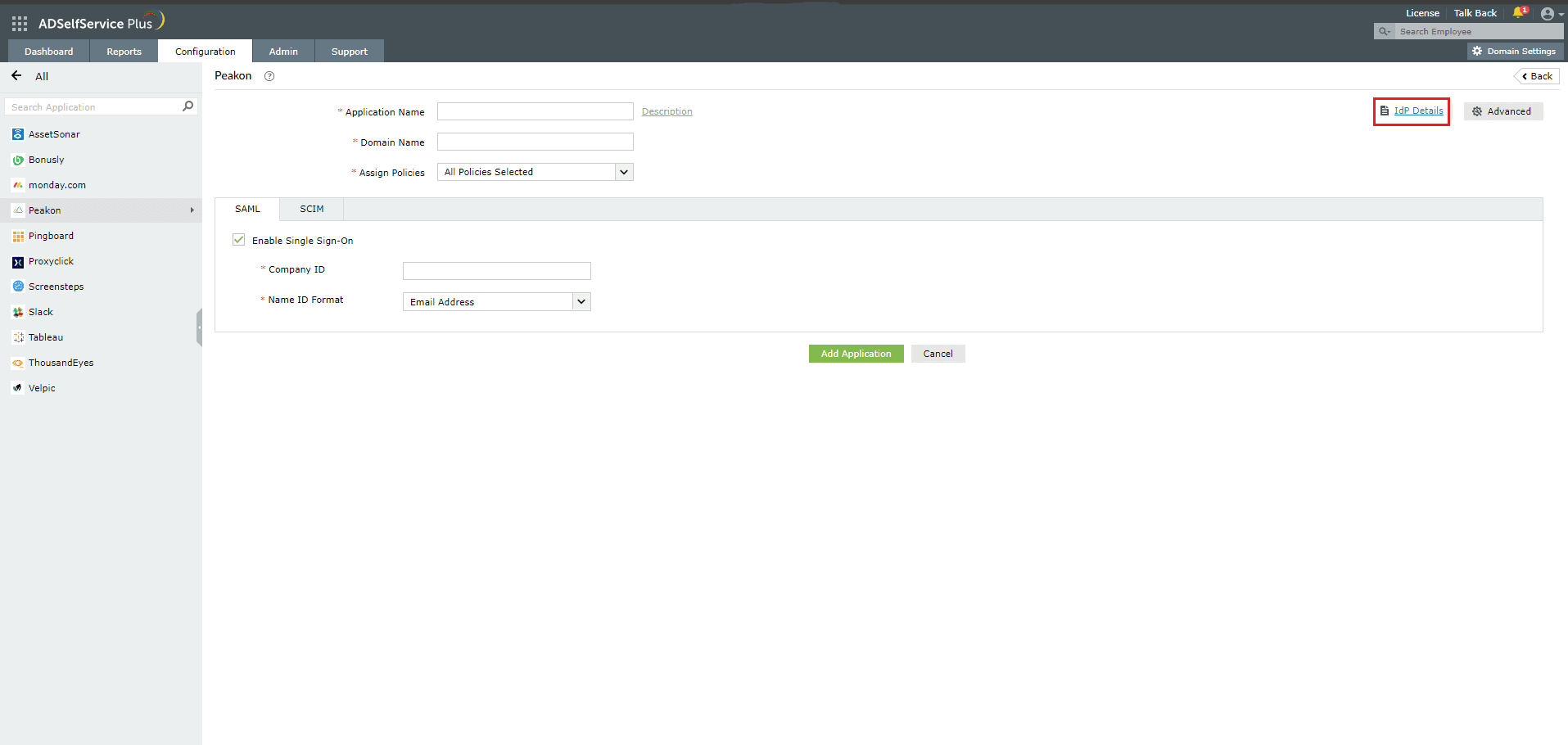
- In the pop-up that appears, copy the Login URL, Logout URL, and download the SSO certificate by clicking on Download X.509 Certificate.
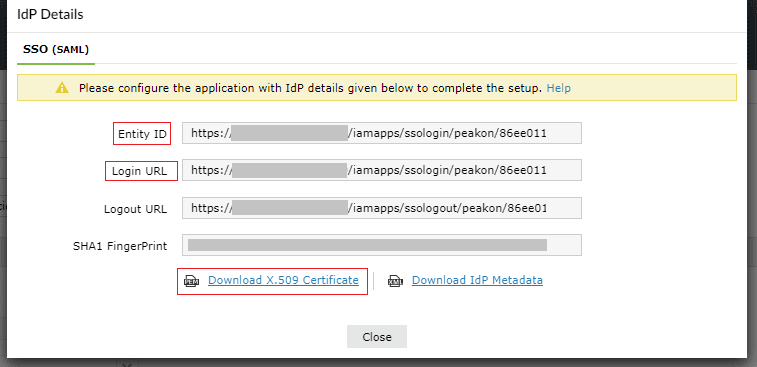
Peakon (Service Provider) configuration steps
- Login to Peakon with an administrator’s credentials.
- In the left pane, click Administration.
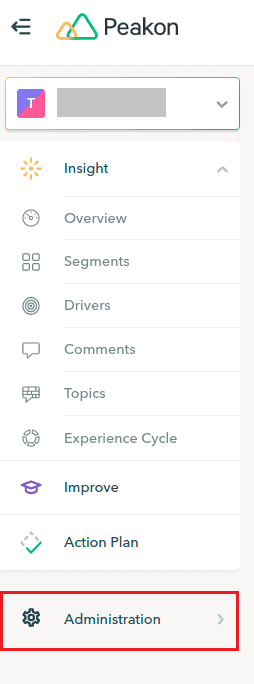
- Navigate to Company > Integrations > Single Sign-On using SAML.
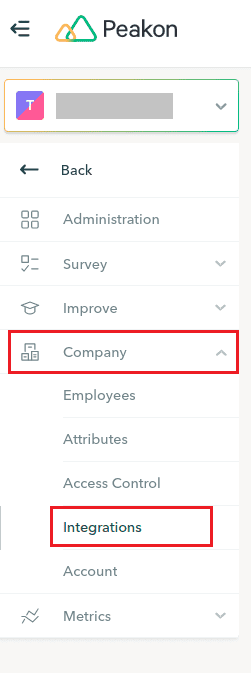
- Locate the Entity ID or Reply URL (ACS) values. Make note of your Company ID that is a portion of those values (refer the screenshot below).
- Enter the Login URL and Logout URL values copied in step 4 of Prerequisite in the SSO Login URL and SSO Logout URL fields respectively.
- Click Choose file and upload the X.509 certificate file downloaded in step 4 of Prerequisite.
- Click Save.
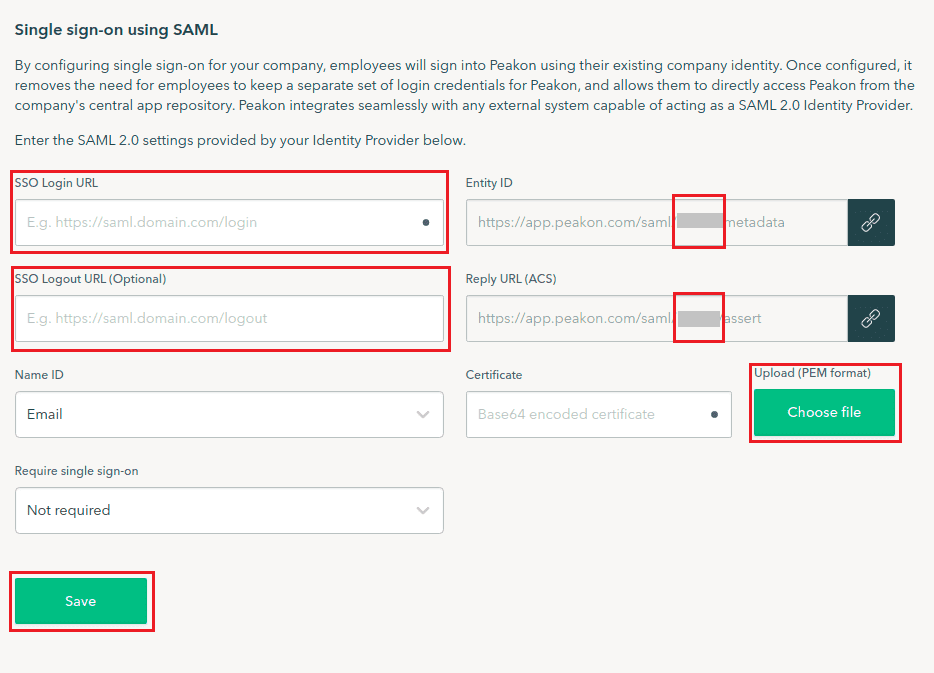
ADSelfService Plus (Identity Provider) configuration steps
- Now, switch to ADSelfService Plus’ Peakon configuration page.
- Enter the Application Name and Description.
- Enter the Domain name of your Peakon account. For example, if you use johndoe@thinktodaytech.com to log in to Peakon, then thinktodaytech.com is the domain name.
- In the Assign Policies field, select the policies for which SSO need to be enabled.
Note: ADSelfService Plus allows you to create OU and group-based policies for your AD domains. To create a policy, go to Configuration > Self-Service > Policy Configuration > Add New Policy.
- Select the SAML tab and check Enable Single Sign-On.
- Enter the Company ID copied in step 4 of Peakon (Service Provider) configuration steps.
- In the Name ID Format field, choose the format for the user login attribute value specific to the application.
Note: Use Unspecified as the default option if you are unsure about the format of the login attribute value used by the application.
- Click Add Application.
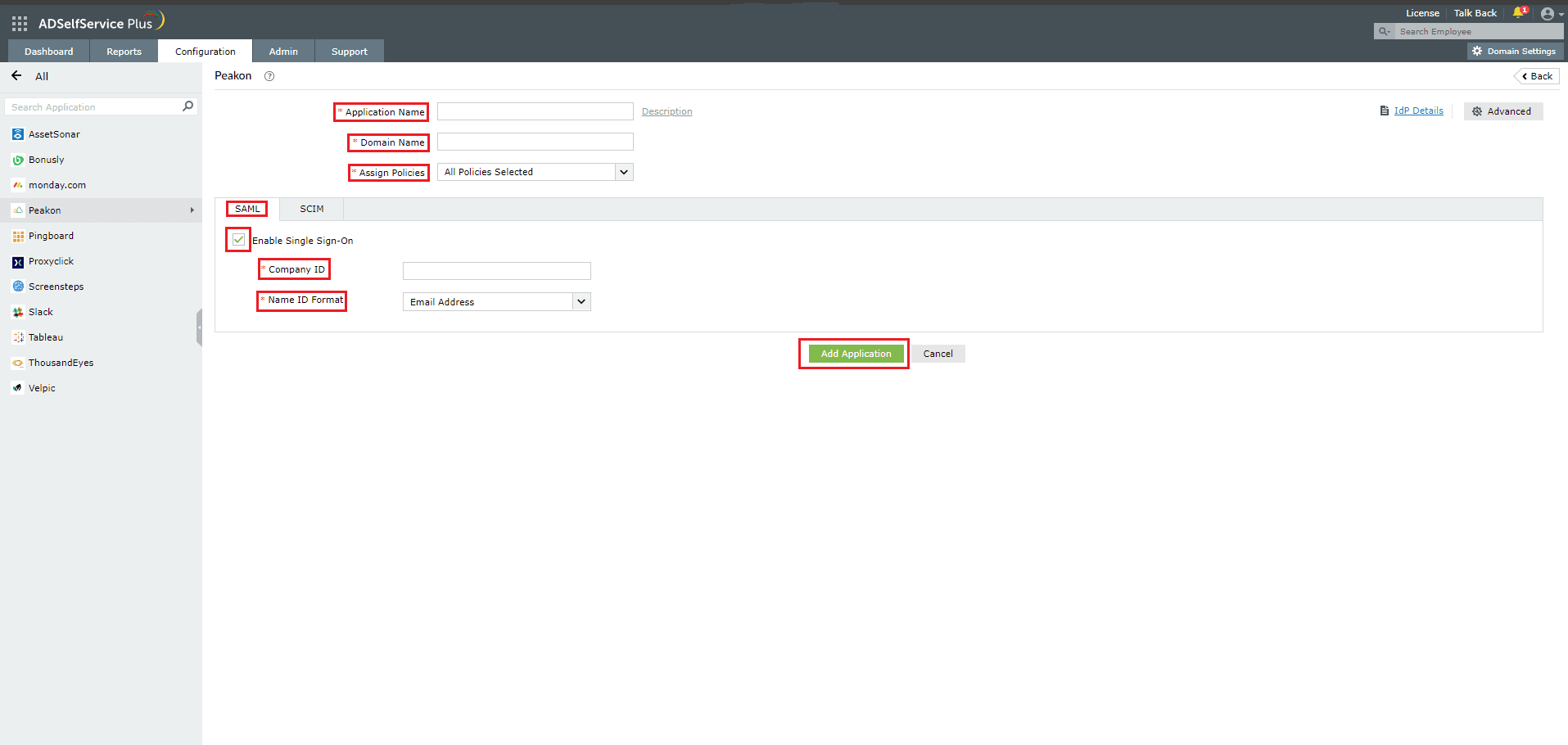
Your users should now be able to sign in to Peakon through ADSelfService Plus.
Note: For Peakon, single sign-on is supported for SP and IDP initiated flow.





